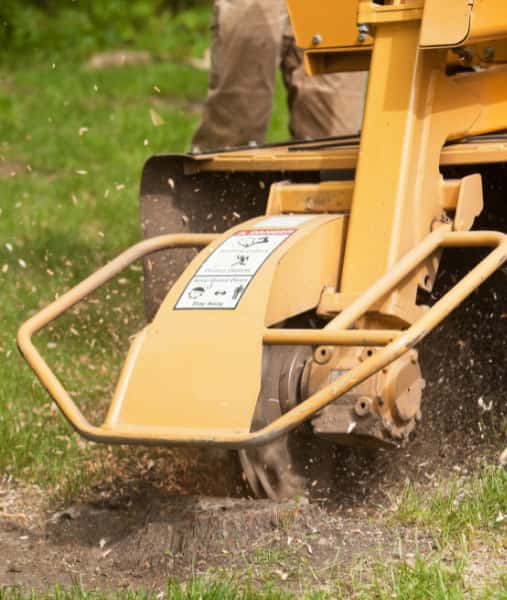Tree surgery plays a vital role in maintaining the health, safety, and appearance of trees. However, when carried out incorrectly, it can lead to long-term damage, safety hazards, and costly remedial work. Poor tree surgery practices not only compromise the structural integrity of trees but can also create risks for surrounding properties and individuals. Understanding these issues and knowing how to avoid them is essential for responsible tree care.
The Consequences of Poor Tree Surgery
1. Structural Weakness and Tree Decline
Incorrect pruning techniques, such as excessive crown thinning or improper cuts, can weaken a tree’s structure. Removing too many branches at once can reduce the tree’s ability to photosynthesise, leading to stress, disease, and even death.
2. Increased Risk of Falling Branches
Badly pruned trees often develop weak regrowth, which is more prone to failure in adverse weather conditions. Poor cuts can also create entry points for decay, increasing the likelihood of branches breaking off unexpectedly.
3. Unsightly Appearance and Reduced Aesthetic Value
Over-pruning or using improper cutting methods can leave a tree looking misshapen, unbalanced, or even permanently damaged. This not only affects the tree’s natural beauty but can also reduce the visual appeal of the surrounding landscape.
4. Vulnerability to Pests and Disease
Incorrectly executed tree work can expose trees to fungal infections, bacterial diseases, and pest infestations. Open wounds from improper cuts provide easy access for harmful organisms, which can quickly spread and compromise the entire tree.
5. Safety Hazards and Legal Issues
Poorly executed tree work can result in weakened structures that pose a danger to nearby buildings, roads, and pedestrians. If a tree fails due to incorrect pruning or felling, the property owner could be liable for any damage or injury caused. Additionally, unauthorised work on protected trees can result in legal action and significant fines.
Common Poor Tree Surgery Practices
1. Topping
Topping is the excessive removal of large sections of a tree’s crown, leaving behind stubs instead of properly pruned branches. This practice:
- Causes stress and weak regrowth
- Increases vulnerability to disease
- Creates an unnatural and unsightly appearance
2. Over-Pruning
Removing too much foliage at once weakens the tree’s ability to generate energy through photosynthesis. Over-pruning can:
- Lead to poor growth patterns
- Increase susceptibility to pests and disease
- Cause long-term structural damage
3. Flush Cutting
Flush cutting involves removing a branch too close to the trunk, eliminating the natural protective boundary that aids in healing. This technique often results in:
- Delayed healing and increased risk of decay
- Structural weakness in the remaining tree framework
- Entry points for infections and pests
4. Using Unqualified or Inexperienced Tree Surgeons
Hiring an unqualified tree surgeon or attempting DIY tree surgery can lead to improper cuts, unsafe working conditions, and irreversible tree damage. Without professional knowledge and equipment, mistakes can be costly and dangerous.
How to Ensure Proper Tree Surgery
1. Hire Qualified Tree Surgeons
Professional tree surgeons have the training, expertise, and equipment needed to perform tree surgery correctly and safely. When choosing a tree surgeon:
- Check for relevant qualifications (e.g., NPTC, LANTRA certifications)
- Look for industry accreditations such as the Arboricultural Association
- Ask for references or reviews from previous customers
2. Follow Correct Pruning Techniques
Proper pruning techniques ensure healthy growth and structural integrity. These include:
- Crown thinning to maintain a balanced canopy
- Crown reduction to manage size without damaging the tree
- Deadwood removal to eliminate weak or hazardous branches
3. Schedule Regular Tree Maintenance
Routine inspections and maintenance prevent small issues from becoming major problems. Regular tree care helps:
- Identify early signs of disease or structural weakness
- Prevent excessive branch growth that could become hazardous
- Ensure trees remain healthy and visually appealing
4. Understand Local Tree Regulations
Certain trees are subject to Tree Preservation Orders (TPOs) or are located in conservation areas where restrictions apply. Before carrying out any work:
- Check with the local council for permissions
- Ensure compliance with legal requirements
- Work with a professional who understands local regulations
Conclusion
Poor tree surgery can have long-lasting negative effects on tree health, safety, and aesthetics. From improper pruning to hiring unqualified contractors, these mistakes can lead to structural failure, disease, and even legal issues. By working with experienced tree surgeons and following best practices, property owners can ensure their trees remain healthy, safe, and visually appealing for years to come.
For professional tree care in Oxted, Surrey, seeking expert guidance is the best way to protect and maintain trees effectively.
Call us on: 01883 771 495
Click here to find out more about NS Tree Surgery Oxted
Click here to complete our contact form and see how we can help with your tree’s needs.

